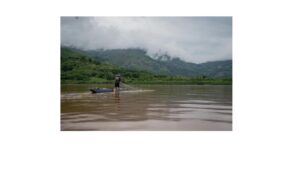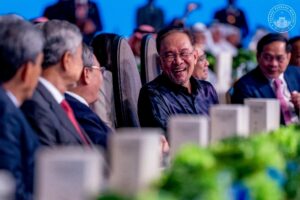By DARZKKG (Dr Abdul Rahman Zafrudin @ Ko Ko Gyi)
Why This Matters
Myanmar stands at the edge of a prolonged civil war with no real winner in sight. The suffering of civilians—whether inside the country or in exile—is immense. Both a military victory or revolutionary victory risks unleashing uncontrolled violence, warlordism, and decades of instability.
Thus, a negotiated and inclusive peace, however difficult, remains the only viable long-term solution to prevent Myanmar from becoming another failed state like Syria, Libya, or Afghanistan.
The Strategic Peace Roadmap (2025–2030)
Phase 1: Humanitarian Ceasefire and Confidence Building (2025)
Led by: Malaysia and ASEAN with UN and OIC observers
Supported by: China, US, EU, Japan, India, and neutral peace-building countries (Norway, Switzerland)
Key Elements:
- Immediate ceasefire in agreed “safe zones” for humanitarian corridors.
- ASEAN/UN Humanitarian Monitoring Teams deployed.
- Release of non-combatant political prisoners and civilian detainees.
- NUG, Junta, EROs, religious groups, and minority leaders invited to initial Pre-Talks Roundtable hosted by Malaysia (neutral site).
- No demand for immediate disarmament—just de-escalation.
Phase 2: Federal Dialogue and National Convention 2.0 (2026)
- Inspired by 1947 Panglong Spirit and Federal Democracy principles.
- Equal status to EROs, NUG, and ethnic/religious minorities in drafting.
- Key topics:
- Federal Constitution with true power sharing.
- Religious Freedom Guarantees, anti-discrimination laws.
- Return of IDPs and refugees with citizenship and safety.
- Transitional Justice Mechanism: truth, amnesty, and reconciliation model.
- All parties agree to freeze all military operations during convention period.
Phase 3: Transitional Power-Sharing Government (2027–2029)
- Formation of a National Unity Transitional Government (NUTG):
- Tripartite structure: (1) Civilian politicians (NUG, NLD, independents), (2) Ethnic and religious representatives, (3) Restructured military/Veterans.
- No veto power for military.
- Special advisory seats for international guarantors (ASEAN, UN, China, US).
- Creation of an Independent Commission on:
- Economic reconstruction
- Anti-corruption
- Army reform and civilian control
- Citizenship review (incl. Rohingyas)
Phase 4: Free & Fair Elections with New Constitution (2030)
- Supervised by ASEAN + UN + neutral global observers.
- All eligible ethnic and religious communities included as voters and candidates.
- Post-election: Permanent Civilian Government established under the new Constitution.
Accountability and Justice
- Transitional Amnesty ONLY for those who commit to ceasefire and truth-telling.
- A Truth and Reconciliation Commission (TRC) model, inspired by South Africa and Rwanda, to:
- Document atrocities (incl. Rohingya Genocide, civil war crimes)
- Offer conditional amnesty in exchange for confession
- Recommend reparations and healing processes
Security Sector Reform
- Step-by-step disarmament, demobilization, and reintegration (DDR).
- Restructure the military under democratic control.
- Local police forces under ethnic/state governments.
Economic Rehabilitation Plan
- Freeze and review Chinese/Junta-era projects—only those compliant with international and local standards continue.
- Special Reconstruction Fund (US$10 billion goal) led by:
- ASEAN + Japan + US + EU + World Bank + OIC + China
- Return of Myanmar diaspora with incentives to invest.
- Green economy, job creation, vocational training for ex-combatants and youth.
Who Needs to Support This?
| Stakeholder | Interests to Protect & Compromise Needed |
| China | Border stability, BRI projects, anti-US presence. Must accept local autonomy and no base expansion. |
| US & Allies | End war crimes, humanitarian access, democracy. Must accept negotiated transition, not total NUG control. |
| ASEAN | Regional stability, refugee reduction. Must act decisively despite “non-interference” doctrine. |
| Russia | May keep arms trade, but excluded from negotiations. |
| NUG/NLD | Civilian rule, ethnic alliance. Must compromise on military purges and allow shared power in transition. |
| Tatmadaw | Institutional survival. Must accept role reduction, end to impunity, and civilian control in future. |
| ERO/PDF | Autonomy, dignity, protection of territory. Must allow political integration, accept DDR plan. |
| Minority Races/Religious Groups | Citizenship, dignity, protection. Must be given full political and legal rights. |
Conclusion: Is There Light at the End of the Tunnel?
Yes—but only if the guns are laid down, voices are heard, and justice is not sacrificed. Myanmar cannot afford another decade of bloodshed. The people, especially the next generation, deserve a future with dignity, peace, and unity in diversity.
What’s needed now is not only international diplomacy—but moral leadership, courage to forgive, and strength to build a better system where no one is above the law and no group is left behind.
NOTE: This is my proposal to ASEAN, Malaysian Government and MOFA (Ministary of Foreign Affairs) only. Not endorsed by anyone.
And I never ever tried to legalize or legitimized the present sham election of Military Junta in 2025.
My proposal for election is only at Phase 4: Free & Fair Elections with New Constitution (i.e. estimated in the proposal in 2030).
မြန်မာနိုင်ငံ ဖက်ဒရယ်ဒီမိုကရေစီရရှိပြီး ငြိမ်းချမ်းသာယာ ဖွံ့ဖြိုးတိုးတက်ရေးအတွက် မဟာဗျူဟာ လမ်းပြမြေပုံ
ရေးသားသူ – ဒေါက်တာကိုကိုကြီး
ဤကိစ္စ အရေးကြီးရသည့် အကြောင်းရင်း
မြန်မာနိုင်ငံသည် ‘တော်လှန်ရေးကြီး အဒွန့်ရှည်ပြီး’ အရှုံးအနိုင်မရှိသော ပြည်တွင်းစစ်ကြီးသက်တမ်း ကြာရှည်စွာ ဆက်လက်၍ ဖြစ်ပွားနေနိုင်သော အခြေအနေဆိုးထဲကို ရောက်ရှိနေပါပြီ။ ပြည်တွင်း၊ ပြည်ပ နေရာတိုင်း၌ အရပ်သားများ ဆိုးရွားစွာ နာကျင်ခံစားနေရပါသည်။
တော်လှန်ရေးအနိုင်ရရ၊ စစ်တပ်ကနိုင်နိုင်၊ စစ်ရှုံးသူများ၏ အဖွဲ့ငယ်များက သူတလူ ငါတမင်း မြေပေါ် မြေအောက် လက်နက်ကိုင်အဖွဲ့ များအဖြစ် ပေါ်ပေါက်လာပြီး ပြည်သူများကို ဒုက္ခပေးကြတော့မည် ဖြစ်ပါ
သည်။
ထို့ကြောင့် ခက်ခဲသော်လည်း ဘက်စပ်စုံ ညှိနှိုင်းဆွေးနွေး၍ ငြိမ်းချမ်းရေး ရယူနှိုင်မှသာလျင် Fail Statesခေါ် ဘက်စုံဆုံး ဆင်းရဲမွဲတေကျရှုံးတဲ့နိုင်ငံတွေစာရင်းမဝင်ပဲ ငြိမ်းချမ်းသာယာ ဖွံ့ဖြိုးတိုးတက်သော ဖက်ဒရယ်ဒီမိုကရေစီရရှိနိုင်ပါမည်။
ငြိမ်းချမ်းရေး မဟာဗျူဟာ လမ်းပြမြေပုံ (၂၀၂၅–၂၀၃၀)
အဆင့် (၁) – လူသားချင်းစာနာမှု နှင့် ယုံကြည်မှုတည်ဆောက်ရန် စစ်ရပ်စဲခြင်း (၂၀၂၅)
ဦးဆောင်ရမည့်နိုင်ငံများ – မလေးရှား၊ အာဆီယံ၊ ကုလသမဂ္ဂ၊ အကြီးအကဲများ
ဝိုင်းဝန်းပံ့ပိုး အာမခံနိုင်ငံများ – တရုတ်၊ အမေရိကန်၊ ဥရောပသမဂ္ဂ၊ ဂျပန်၊ အိန္ဒိယ၊ နိုင်ငံတကာ ငြိမ်းချမ်းရေးထောက်ပံ့နိုင်သူများ (နော်ဝေ၊ ဆွစ်ဇာလန်) နှင့် အိုအိုင်စီ (OIC)
အဓိကအချက်များ
- ချက်ချင်း အတိုက်အခိုက်ရပ်ဆဲရန်နှင့်
- “အန္တရာယ်ကင်းသော ကယ်ဆယ်ရေးလမ်းကြောင်း” များသဘောတူသတ်မှတ်၍ ၄င်းနေရာများတွင်အထူးသဖြင့် အတိုက်အခိုက်ရပ်ဆဲရန်။
- အာဆီယံ နှင့် ကုလသမဂ္ဂ ‘အပစ်အခတ်ရပ်ဆဲရေး’ နှင့် ‘လူသားချင်းစာနာမှု’ စောင့်ကြည့်အဖွဲ့များ ခန့်အပ်ရန်။
- နှစ်ဖက် အကျဉ်းသားများနှင့် ဖမ်းဆီးခံထားသူ အရပ်သားများ လွှတ်ပေးရန်။
- NUG မြန်မာနိုင်ငံ အမျိုးသား စည်းလုံးညီညွတ်ရေး အစိုးရ၊ စစ်ကောင်စီ၊ တိုင်းသားလွတ်မြောက်ရေးတပ်များ (EROs)၊ ပြည်သူ့ကာကွယ်ရေးတပ်ဖွဲ့များ၊ လူနည်းစုဘာသာရေးခေါင်းဆောင်များကို မလေးရှား၌ ‘အကြို ဆွေးနွေးပွဲ စကားဝိုင်း’ (Pre-Talks Roundtable) အတွက်ဖိတ်ကြား ဆွေးနွေးခြင်း။
- မည်သူ့ကိုမှ ချက်ချင်း လက်နက်ချရန် မတောင်းဆိုသေးဘဲ ခေတ္တအတိုက်အခိုက်လျော့ချမှု အတွက်သာ ညှိနှိုင်းရမည်။
အဆင့် (၂) – ဖက်ဒရယ် ညှိနှိုင်းမှု နှင့် အမျိုးသား ညီလာခံ ၂.၀ (၂၀၂၆)
အဓိက စိတ်ဓာတ် – ၁၉၄၇ ပင်လုံ စာချူပ်၏ စိတ်ဓာတ်နှင့် ဖက်ဒရယ် ဒီမိုကရေစီ အခြေခံစည်းမျဉ်းများ လမ်းညွှန်ချက်များအတိုင်း ဆွေးနွေး ညှိနှိင်းကြပါရန်။
အဓိက ခေါင်းစဉ်များ
- စစ်မှန်သော အာဏာမျှဝေမှု ပါဝင်သည့် ဖက်ဒရယ် ဒီမိုကရေစီ အခြေခံဥပဒေရေးဆွဲခြင်း
- ဘာသာရေးလွတ်လပ်ခွင့်အာမခံမှု၊ ခွဲခြားဖိနှိပ်မှုဆန့်ကျင် ဥပဒေများ
- နေရပ်စွန့်ခွာသွားသူများ၊ ဒုက္ခသည်များကို ပြန်လည်လက်ခံ၍ နိုင်ငံသားအနေဖြင့် လုံခြုံစွာ နေထိုင်ခွင့်
- ‘အသွင်ကူးပြောင်းရေးဆိုင်ရာ တရားမျှတမှု ယန္တရား’ (Transitional Justice Mechanism) အကောင်အထည်ဖော် ၍ ပြန်လည်သင့်မြတ်ရေးလုပ်ရန်ကြိုးစားခြင်း။
- ညီလာခံ ကာလအတွင်း တိုက်ပွဲများ အလုံးစုံ ခေတ္တရပ်စဲရန် သဘောတူစာချုပ် ချုပ်ဆိုခြင်း။
အဆင့် (၃) – မြန်မာနိုင်ငံ အသွင်ကူးပြောင်းရေး စည်းလုံးညီညွတ်ရေး အစိုးရ ဖွဲ့စည်းခြင်း
(၂၀၂၇–၂၀၂၉) (Myanmar National Unity Transitional Government)
အဓိကသုံးပိုင်း –
၁. အရပ်သားနိုင်ငံရေးခေါင်းဆောင်များ (NUG, NLD, သည်းခြားလွတ်လပ်သူများ)
၂. လူမျိုးစုနှင့် ဘာသာရေး ကိုယ်စားလှယ်များ
၃. ပြန်လည်ဖွဲ့စည်းထားသည့် စစ်တပ်နှင့် စစ်မှုထမ်းဟောင်းများ
- စစ်တပ်ကို ဗီတိုအာဏာမပေးသင့်ပါ။
- အာဆီယံ၊ ကုလသမဂ္ဂ၊ တရုတ်၊ အမေရိကန်တို့အနေဖြင့် အစိုးရ အကြံပေးအဖြစ် ကိုယ်စားလှည် တစ်ဦးစီ ပါဝင်ခွင့်ပြုရန် စဥ်းစားသင့်သည်။
ဖွဲစည်းသင့်သော ပူးပေါင်း ကော်မရှင်များ –
- စီးပွားရေး ပြန်လည်ထူထောင်ရေး
- အဂတိလိုက်စားမှုတိုက်ဖျက်ရေး
- စစ်တပ် ပြန်လည်ဖွဲ့စည်းရေး (အရပ်သားအုပ်ချုပ်မှုအောက်ထားရှိရမည်)
- နိုင်ငံသားအခြေအနေ ပြန်လည်သုံးသပ်ရေး (ရိုဟင်ဂျာအပါအဝင်)
အဆင့် (၄) – လွတ်လပ်တရားမျှတ သောရွေးကောက်ပွဲ (၂၀၃၀)
- စစ်ကောင်စီ ယခုစီစဥ်နေသောရွေးကောက်ပွဲ ကို (၂၀၃၀) ခန့်အထိ ရွေ့ဆိုင်းရန်
- အာဆီယံ၊ ကုလသမဂ္ဂ၊ နိုင်ငံတကာ စောင့်ကြည့်သူများ ပါဝင်ကြည့်ကျပ်၍ ရွေးကောက်ပွဲကို (၂၀၃၀) ခန့်၌သာ ပြုလုပ်ရန်။
- နိုင်ငံသားအားလုံး လူမျိုး၊ ဘာသာမရွေး အတူတူ မဲပေးခွင့်၊ မဲဆန္ဒရှင်အဖြစ် ပါဝင်ခွင့်ရမည်။
- ရွေးကောက်ပွဲပြီးနောက် – အသစ်ရေးဆွဲသည့် ဖက်ဒရယ် အခြေခံဥပဒေ အောက်တွင် အရပ်သား အစိုးရ အမြဲတမ်း တည်ထောင်မည်။ စစ်အာဏာသိမ်းခြင်းကိုခွင့်မပြု ကြောင်း အခြေခံဥပဒေ၌ထည့်သွင်းတားစီးရန်။
တာဝန်ယူမှု၊ တာဝန်ခံမှု နှင့် တရားမျှတမှု ရရှိရေး (Accountability & Justice)
- အပစ်အခတ်ရပ်စဲရေးလက်ခံပြီး အမှန်တရားပြောရန် ကတိကဝတ်ပြုသူများအတွက်သာ အသွင်ကူးပြောင်းရေး ကာလအတွင်း လွတ်ငြိမ်းချမ်းသာခွင့်ပေးရန်။
- တောင်အာဖရိကနှင့် ရဝမ်ဒါတို့တို့တွင်လုပ်ဆောင်ပေးခဲ့သော ‘အမှန်တရားနှင့် ပြန်လည်သင့်မြတ်ရေးကော်မရှင်’ (TRC) စံနမူနာကို ယူသင့်သည်။
- ရက်စက်ကြမ်းကြုတ်သောရာဇဝတ်မှုများ (ဥပမာ ရိုဟင်ဂျာ လူမျိုးတုံးသတ်ဖြတ်မှု၊ ပြည်တွင်းစစ်ရာဇ၀တ်မှုများ အပါအဝင်) ကို စုံစမ်း စစ်ဆေး မှတ်တမ်းတင်ထားရန်။
- အပစ်ဝန်ခံ တောင်းပန် သူများကို အခြေအနေအရ လွတ်ငြိမ်းချမ်းသာခွင့် ပေးပါ။
- လျော်ကြေးပေးခြင်း အကူအညီအထောက်အပံ့ပေးခြင်းနှင့် (စိတ်နှင့်ကိုယ်) ဆေးဝါးကုသပေးခြင်း လုပ်ငန်းစဉ်များကို ပြုပါ။
လုံခြုံရေးကဏ္ဍ ပြုပြင်ပြောင်းလဲဖွဲ့စည်းရေး
- လက်နက်ကိုင် အဖွဲ့အားလုံး အဆင့်ဆင့် လက်နက်ဖျက်သိမ်းရေး၊ အဖွဲ့စုံတပ်ဖျက်သိမ်းရေးနှင့် တပ်မတော်ပြန်လည်ဖွဲ့စည်းရေး အတွက် အဖွဲ့အားလုံးမှ မိမိကိုယ်တိုင်ဆန္ဒပြုသူစာရင်းမှ သင့်လျော်သော အပစ်ကင်းသူများကို disarmament, demobilization, and reintegration (DDR) အရ ရွေးချယ်တာဝန်ပေး ခန့်အပ်ရန်။
- အဆင့်တိုင်းအလိုက် လက်နက်ချသူ၊ တော်လှန်ရေးတပ်သားများ၊ စစ်မှုထမ်းများကို နေရပ်ပြန်ပို့ခြင်း၊ ပြန်လည်အသက်မွေးဝမ်းကျောင်းရေး (DDR)အတွက်ကူညီပန့်ပိုးခြင်း
- လူမျိုးစုံ ဘာသာစုံပါဝင် သော စစ်တပ် (တပ်မတော်အသစ်) ကို ဒီမိုကရေစီ အောက် ၌ပြန်လည်ဖွဲ့စည်းခြင်း
- ပြည်နယ် တိုင်း ဒေသအလိုက် ရဲတပ်ဖွဲ့များကို သက်ဆိုင်ရာဒေသအုပ်ချုပ်ရေး အစိုးရများ အောက်တွင်ထားခြင်း
စီးပွားရေး ပြန်လည်ထူထောင်ရေး အစီအစဉ်
- တရုတ်/စစ်ကောင်စီခေတ် ကုမ္ပဏီစီမံကိန်းများကို ပြန်လည် စိစစ်၍ နိုင်ငံတကာ စံချိန်စံညွှန်းနှင့် ကိုက်ညီပြီး အစိုးရအသစ်က တိုင်းပြည်အတွက်တကယ်အကျိုးရှိမည့် စီမံကိန်းများကို ဆက်လက် လက်ခံလုပ်ခွင့်ပြုသင့်သည်။
- နိုင်ငံတော် ပြန်လည်တည်ဆောက်ရေး ရန်ပုံငွေ အမေရိကန်ဒေါ်လာ USD $ ၁၀ ဘီလီယံ ကိုစုဆောင်းရန် (Reconstruction Fund) – အာဆီယံ၊ ဂျပန်၊ အမေရိကန်၊ ဥရောပသမဂ္ဂ၊ ကမ္ဘာဘဏ်၊ အိုအိုင်စီ၊ တရုတ်တို့ ဦးဆောင်ရန်ပန်ကြားမေတ္တာရပ်ခံသင့်သည်။
- ပြည်ပရောက် မြန်မာနိုင်ငံသားများ ပြန်လာခဲ့ကြရန် ရင်းနှီးမြုပ်နှံမှု မက်လုံးများပေး၍ ဆွဲဆောင်ရန် နှင့် အမြဲ/နှစ်ရှည် နေထိုင်ခွင့်ဗီဆာများထုတ်ပေးသင့် သည်
- အစိမ်းရောင် စီးပွားရေး ၊ အလုပ်အကိုင်ဖန်တီးမှု၊ လက်နက်ချပြီး စစ်သား၊ လူငယ်များအတွက် အသက်မွေး အလုပ်သင်ပညာပေး။
- အစိမ်းရောင်စီးပွားရေး (Green economy) အလုပ်အကိုင်များဖန်တီးရေး၊ တိုက်ပွဲဝင်ဟောင်းများနှင့် လူငယ်များအတွက် အသက်မွေးဝမ်းကျောင်းသင်တန်းများ ဖွင့်လှစ်ပေးရေး။
ဤဆွေးနွေးပွဲတွင်ပါဝင်သည့် နိုင်ငံများနှင့် ဆန့်ကျင်ဖက်အဖွဲ့အသီးသီးမှ ပုဂ္ဂိုလ်များ၏ အကျိုးစီးပွား များကို အပြန်အလှန် အလျှော့ပေး ငြှိနှိုင်း စေ့စပ်မှုများပြုလုပ်ရန် စဥ်းစားနိုင်ရန် အကြံပေးမှုအချို့ကို တင်ပြအပ်ပါသည်။
- တရုတ် – နယ်စပ်အေးချမ်းရေး၊ BRI စီမံကိန်း၊ အမေရိကန်အာဏာ လွန်စွာမချဲ့ထွင်ရန်။ (ဒေသလွတ်လပ်ခွင့် ချိန်ညှိရန်လို) မြန်မာစစ်အစိုးရကို ဖိအားပေးပေးပါရန်
- အမေရိကန် နှင့် မိတ်ဖက်များ – စစ်ရာဇဝတ်မှုများ ရပ်စဲ၊ လူသားချင်းစာနာမှု ခွင့်ပြုရန်။ (NUG အပြည့်အဝအနိုင်ရမှု မလိုအပ်ပါ) အမေရိကန်၏မဟာမိတ် ကြားနေဖြစ်ရန် နိုင်ငံရေး စီးပွါးရေး မြေရှားသတ္ထု နှင့်အခြား သယံဇာတ ရှာဖွေထုတ်လုပ်မှုများ ပူးပေါင်းလုပ်ရန်
- အာဆီယံ – ဒေသအေးချမ်းရေး၊ စစ်ပြေး၊ စီးပွါးရေး နှင့် တရားမဝင် ရွေ့ပြောင်းဒုက္ခသည် လျှော့ချမှု။ မိမိနိုင်ငံအတွင်း အပြင် မြန်မာနိုင်ငံအတွင်းထိပါဝင်ရောက် ကူညီ တာဝန်ယူပေးရန်လိုအပ်ပါသည်။
- ရုရှား – လက်နက်ကုန်သွယ်မှု ဆက်လက်ခွင့်ရှိနိုင်သော်လည်း ညှိနှိုင်းမှုမှ ဝင်ရောက်မနှောက်ယှက်ပါရန်။
- NUG/NLD – အရပ်သား အုပ်ချုပ်မှု၊ လူမျိုးနည်းစု ပူးပေါင်းမှု။ (စစ်တပ်ထိန်းသိမ်းမှု ကို ကိုယ်ပိုင်အစွမ်းဖြင့် လျင်မြန်စွာ လုံးဝမဖယ်ရှားနိုင်ကြောင်းလက်ခံ၍ အာဏာခွဲဝေမှုလက်ခံရန်)
- တပ်မတော် – အဖွဲ့အစည်း အကျိုးအာမခံမှုရမည်။ အာဏာ လျော့ချ၍ ဒီမိုကရေစီအောက် ထိန်းသိမ်းခံယူရန်။ အာဏာရာထူးလိုလျင် တပ်မှထွက်၍ နိုင်ငံရေးလုပ်ရန်။
- ERO/PDF – ဂုဏ်သိက္ခာ ရှိစွာ နယ်မြေကာကွယ်မှုရမည်။ ဖယ်ဒရယ် ကိုယ်ပိုင်အုပ်ချုပ်ခွင့် နှင့် ၄င်းတို့ကိုယ်တိုင်ရွေးခံပါဝင်ခွင့်ရှိသည့် ပြည်ထောင်စုအစိုးရ နှင့်အာဏာခွဲဝေ အသုံးချမှု လက်ခံရမည်။ (နိုင်ငံရေးပေါင်းစည်းမှု လက်ခံရန်)
- လူမျိုး/ဘာသာနည်းစုများ – နိုင်ငံသားရရှိပြီး၊ ဂုဏ်သိက္ခာ၊ အခွင့်အရေးများကို အပြည့်အဝ တန်းတူ ရရှိရေးအာမခံရရှိမည်။
(အနှစ်ချုပ်)
မြန်မာနိုင်ငံ ပျက်စီးရန် ဖြစ်နေရာမှ ယခုအခါ မိုးညအမှောင် လွန်မြောက်၍ နံနက် အာရုံ အလင်းတန်းတစ် ရောင်နီတခု မြင်နေရပါပြီ။ သေနတ်များ ဘေးချပြီး ငြိမ်းချမ်းရေးဆွေးနွေးသံများ ကြားလာနေပါပြီ။ တရားမျှတမှုရပြီး ငြိမ်းချမ်းသာယာ ဖွံ့ဖြိုးတိုးတက်မှုနှင့် ဖက်ဒရယ်ဒီမိုကရေစီ ရရှိနိုင်တော့မည်။
နောက်ထပ် ဆယ်စုနှစ်တွေ
ကြာအောင် သွေးထွက်သံယိုမှုတွေ မလိုအပ်တော့ပါ။ အထူးသဖြင့် အနာဂတ် သားသမီးများအတွက် ဂုဏ်သိက္ခာရှိရှိ၊ ငြိမ်းချမ်းရေးစွာဖြင့် မျိုးနွယ်စုံ အတူတူ ညီညွတ်စွာ နိုင်ငံတော် သစ်ကို အခိုင်အမာ တည်ဆောက်ကြဖို့ လိုအပ်နေပါပြီ။
လိုအပ်သည့်အရာမှာ သာမန် နိုင်ငံတကာ ညှိနှိုင်းမှုသာ မဟုတ်ပါ။ အကျင့်သိက္ခာ၊သစ္စာ၊ သမာဓိ၊ ခွင့်လွှတ် နိုင်သည့် စွမ်းအားဖြင့် ညီညီညွတ်ညွတ် တရားမျှတသောဥပဒေအောက်၌ အားလုံးပါဝင် သည့် နိုင်ငံသစ်တစ်ခု ဖန်တီးနိုင်ဖို့ စွမ်းအား လိုအပ်သည်။
မှတ်ချက် – ဤအကြံပြုစာတမ်းကို ကျွန်တော် (DARZKKG) မှသာ အာဆီယံ၊ မလေးရှား အစိုးရနှင့် နိုင်ငံခြားရေးဝန်ကြီးဌာန သို့ တင်ပြထားခြင်း ဖြစ်သည်။ မည်သည့်သက်ဆိုင်ရာ အဖွဲ့အစည်းတစ်ခုကမှ တရားဝင် အတည်ပြုမှု မရှိပါ။
၂၀၂၅ စစ်ကောင်စီရွေးကောက်ပွဲကို ထောက်ခံမှု မဟုတ်၊ ကျွန်တော်၏ အကြံပြုရွေးကောက်ပွဲသည် အဆင့် (၄) – ၂၀၃၀ ခုနှစ် တွင်မှ ဖက်ဒရယ် ဖွဲ့စည်းပုံ အခြေခံဥပဒေအောက် လွတ်လပ် တရားမျှတ စွာ ပြုလုပ်မည့် ရွေးကောက်ပွဲကိုသာ ဆိုလိုပါသည်။





